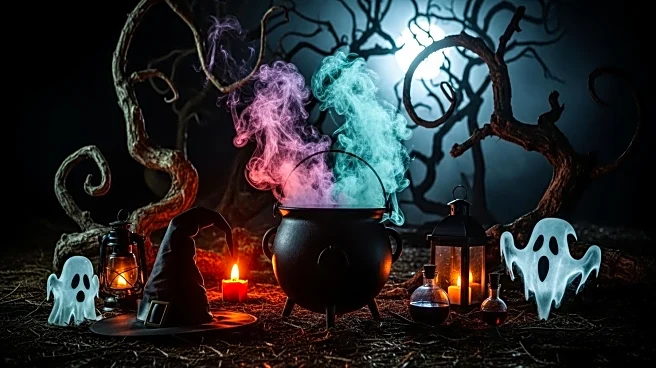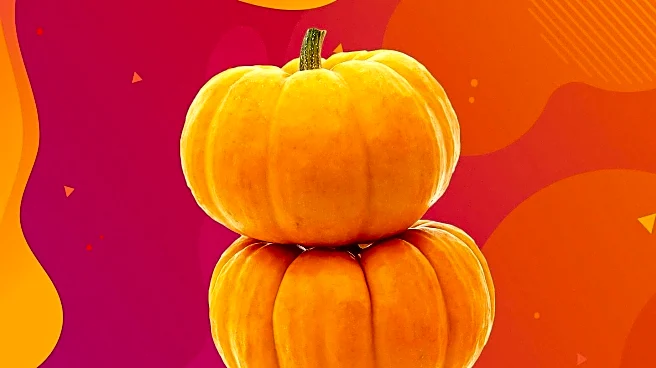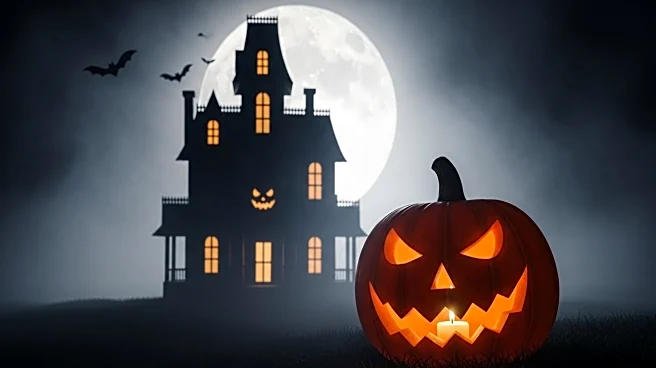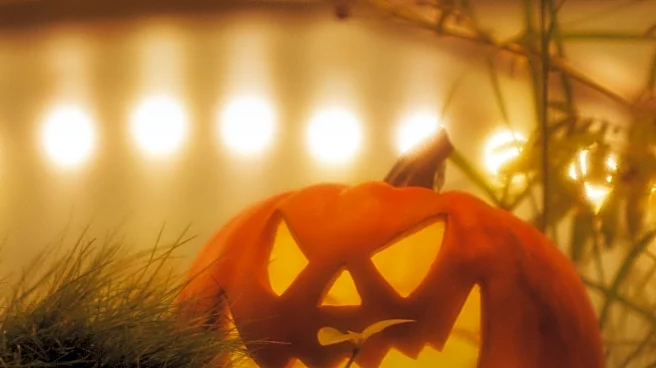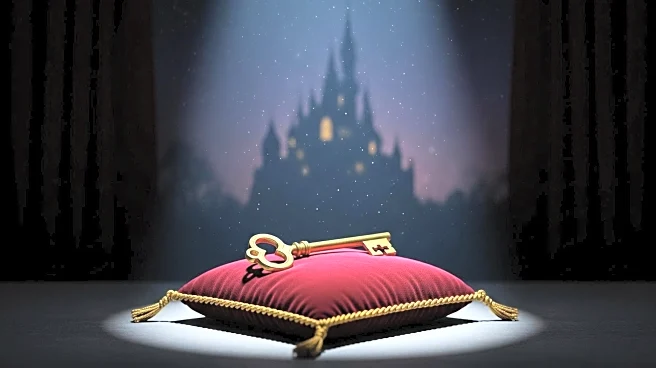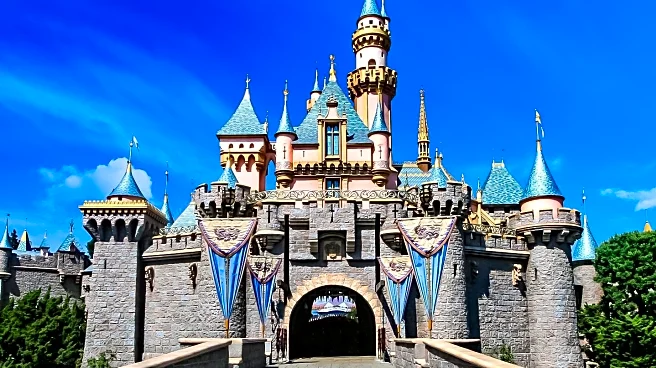What's Happening?
As Halloween 2025 approaches, various brands are launching creative campaigns to captivate audiences during the spooky season. Six Flags has unveiled a long-form horror film titled 'Come Out and Play,' featuring a creepy character named Smiley, designed to enhance the park's nighttime attractions. Fanta has partnered with Universal Pictures and Blumhouse to incorporate iconic horror characters like Megan, Chucky, and Freddy Fazbear into their 'They Wanta Fanta' campaign, which includes a new limited-edition flavor. Additionally, Michaels has released a 'Twinning' campaign showcasing diverse Halloween styles, while Airheads introduces 'Decoy Boy,' a robotic sidekick for adults who wish to trick-or-treat without feeling awkward. Disneyland has paused its 70th Anniversary celebrations to focus on Halloween festivities from August 22 to October 31.
Why It's Important?
These Halloween campaigns highlight the growing trend of brands leveraging seasonal themes to engage consumers and boost sales. By incorporating horror elements and collaborations with popular franchises, companies aim to create memorable experiences that resonate with audiences. This approach not only enhances brand visibility but also taps into the lucrative Halloween market, which sees increased consumer spending on themed products and experiences. The campaigns reflect a strategic move to blend entertainment with marketing, potentially increasing brand loyalty and attracting new customers. As brands continue to innovate, they contribute to the evolving landscape of seasonal marketing, influencing how companies approach holiday-themed promotions.
What's Next?
As Halloween progresses, brands are likely to continue updating and expanding their campaigns to maintain consumer interest. The success of these initiatives may encourage other companies to explore similar collaborations and creative strategies for future seasonal events. Stakeholders, including marketing agencies and entertainment companies, will closely monitor consumer reactions and sales data to assess the effectiveness of these campaigns. The insights gained could inform future marketing decisions and inspire new approaches to holiday-themed promotions. Additionally, the integration of technology, such as Airheads' 'Decoy Boy,' may pave the way for more innovative solutions in engaging audiences during festive seasons.
Beyond the Headlines
The Halloween campaigns also raise questions about the ethical implications of using horror elements in marketing. While these strategies are designed to entertain, they may inadvertently impact consumer perceptions and emotions. Brands must balance creativity with sensitivity to ensure their campaigns do not alienate or distress audiences. Furthermore, the collaboration between Fanta and horror franchises highlights the cultural influence of media partnerships, demonstrating how entertainment can shape consumer experiences and preferences. As brands continue to explore these avenues, they contribute to the broader discourse on the role of marketing in shaping cultural narratives.
